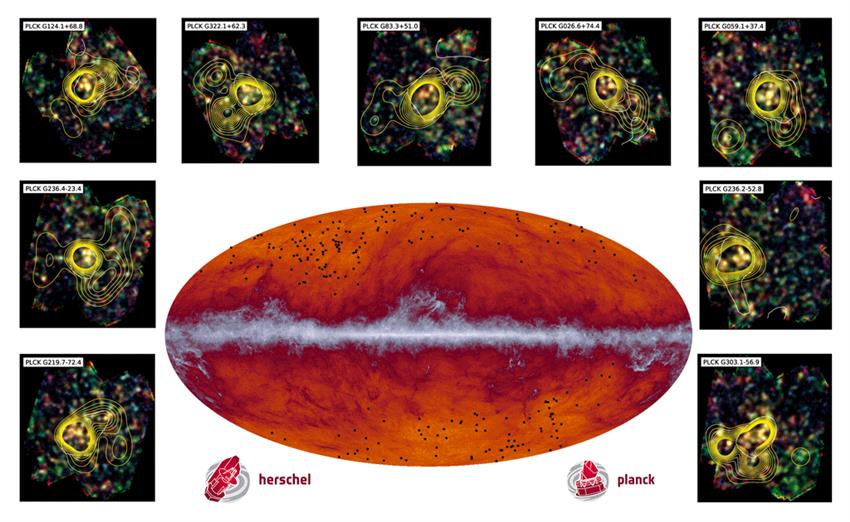Astronomers glimpse clusters of galaxies forming
A team of cosmologists, including astronomers from the University of British Columbia, has discovered what may be the precursors of the vast clusters of galaxies that we see in the universe today.
Galaxies (like our Milky Way) are usually not found in isolation—they tend to clump together in groups of tens, hundreds or even thousands. But cosmologists do not really understand why, nor do they know how these massive structures took shape.
By combining the strengths of the Herschel and Planck space telescopes, researchers have found objects seen at a time when the universe was only three billion years old, which may the first signs of galaxies clumping together—an important clue to how our universe evolved.
This collection of images shows an orange coloured oval-shaped map of the sky produced by Planck, with dust the Milky Way appearing as a grey band stretching across the centre of the image. Each of the black dots indicate the locations where Planck spotted clusters of galaxies developing. The surrounding series of images, taken by Herschel, show what scientists think are the formation actual clusters themselves, with the contours representing their density.
Explore further
- Date modified:
